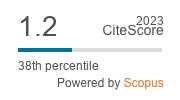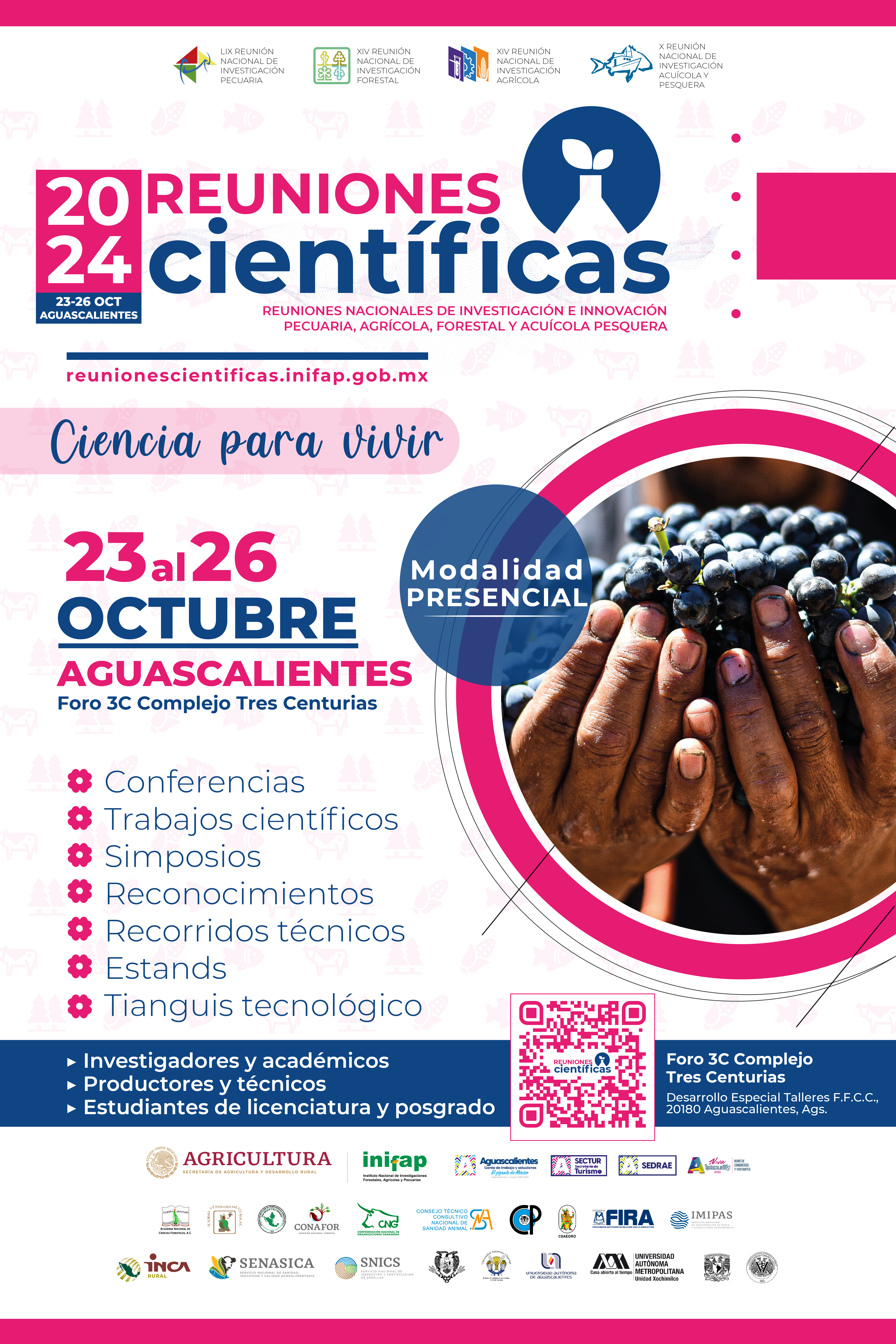La citometría de flujo, un universo de posibilidades en el ámbito veterinario. Revisión
DOI:
https://doi.org/10.22319/rmcp.v13i3.5985Palabras clave:
Citometría de flujo, Inmunofenotipo, Viabilidad, Muerte celular, Análisis de DNA, CitocinasResumen
La citometría de flujo es una tecnología que ha favorecido el rápido avance de muchas y muy diversas áreas de la ciencia, ya que permite la medición simultánea de múltiples características de cada una de las partículas o células individuales que se encuentran en una muestra mientras pasan a gran velocidad a través de una zona iluminada por uno o varios láseres. La información obtenida incluye datos sobre el tamaño y la complejidad interna, así como otros parámetros inherentes a cada una de las partículas presentes en la muestra, los cuales son captados por el equipo como señales luminosas. Las partículas más comúnmente analizadas en los citómetros de flujo son células, así que puede analizarse la expresión de moléculas tanto en su superficie como en su interior, la viabilidad, la funcionalidad, la proliferación celular, el contenido de ADN y la producción de citocinas entre muchas otras. Estas determinaciones pueden realizarse gracias a la utilización de anticuerpos acoplados a fluorocromos o bien, al uso de moléculas cuya fluorescencia depende de la característica que se quiera evaluar. Algunos citómetros de flujo son además clasificadores (“sorters”), lo que implica que el equipo puede separar físicamente las células que presentan las características de interés y además, es factible que una vez que han sido purificadas, éstas puedan emplearse en posteriores experimentos. En esta revisión se concentran los fundamentos de la citometría de flujo y sus principales aplicaciones, las cuales ofrecen una gran ventana de oportunidad en el ámbito veterinario, tanto en investigación como en la clínica.
Descargas
Citas
Shapiro HM. Practical flow cytometry. 4th ed. New Jersey, USA: Wiley; 2003.
Cossarizza A, Chang HD, Radbruch A, Acs A, Adam D, Adam-Klages S, et al. Guidelines for the use of flow cytometry and cell sorting in immunological studies (Second ed). Eur J Immunol 2019;49(10):1457-973.
D’Hondt L, Höfte M, Van Bockstaele E, Leus L. Applications of flow cytometry in plant pathology for genome size determination, detection and physiological status. Mol Plant Pathol 2011;12(8):815-28.
Zamora JLR, Aguilar HC. Flow virometry as a tool to study viruses. Methods 2018;134–135:87-97.
Duquenoy A, Bellais S, Gasc C, Schwintner C, Dore J, Thomas V. Assessment of gram- and viability-staining methods for quantifying bacterial community dynamics using flow cytometry. Front Microbiol 2020;11:1469.
Mandy FF, Nakamura T, Bergeron M, Sekiguchi K. Overview and application of suspension array technology. Clin Lab Med 2001;21(4):713-729.
Morgan E, Varro R, Sepulveda H, Ember JA, Apgar J, Wilson J, et al. Cytometric bead array: a multiplexed assay platform with applications in various areas of biology. Clin Immunol 2004;110(3):252-66.
Pantelyushin S, Ranninger E, Bettschart-Wolfensberger R, vom Berg J. OMIP-065: Dog immunophenotyping and t-cell activity evaluation with a 14-color panel. Cytometry A 2020;97(10):1024-7. https://pubmed.ncbi.nlm.nih.gov/32583607/.
Donaldson MM, Kao SF, Foulds KE. OMIP-052: An 18-color panel for measuring Th1, Th2, Th17, and Tfh responses in rhesus macaques. Cytometry A 2019;95(3):261-263. https://europepmc.org/articles/PMC6414258.
Pedreira CE, Costa E, Lecrevise Q, Grigori G, Fluxa R, Verde J, et al. From big flow cytometry datasets to smart diagnostic strategies: The EuroFlow approach. J Immunol Methods 2019;475.
Kalina T. Reproducibility of flow cytometry through standardization: Opportunities and challenges. Cytometry A 2020;97(2):137-147.
International Clinical Cytometry Society. https://www.cytometry.org/web/journal.php
Marconato L, Comazzi S, Aresu L, Riondato F, Stefanello D, Ferrari R, et al. Prognostic significance of peripheral blood and bone marrow infiltration in newly-diagnosed canine nodal marginal zone lymphoma. Vet J 2019;246:78–84. https://www.sciencedirect.com/science/article/pii/S1090023319300115.
Meichner K, Stokol T, Tarigo J, Avery A, Burkhard MJ, Comazzi S, et al. Multicenter flow cytometry proficiency testing of canine blood and lymph node samples. Vet Clin Pathol 2020;49(2):249-257.
Dudley A, Byron JK, Burkhard MJ, Warry E, Guillaumin J. Comparison of platelet function and viscoelastic test results between healthy dogs and dogs with naturally occurring chronic kidney disease. Am J Vet Res 2017;78(5):589-600.
Thamm DH, Gustafson DL. Drug dose and drug choice: Optimizing medical therapy for veterinary cancer. Vet Comp Oncol 2020;18(2):143-151.
Seidel GEJ. Sexing mammalian sperm - Where do we go from here? J Reprod Dev 2012;58(5):505-509.
Petrunkina AM, Harrison RAP. Fluorescence technologies for evaluating male gamete (dys)function. Reprod Domest Anim 2013;48 (Suppl 1):11-24.
Ortega-Ferrusola C, Gil MC, Rodríguez-Martínez H, Anel L, Peña FJ, Martín-Muñoz P. Flow cytometry in Spermatology: A bright future ahead. Reprod Domest Anim 2017;52(6):921-931.
Picot J, Guerin CL, Le Van Kim C, Boulanger CM. Flow cytometry: retrospective, fundamentals and recent instrumentation. Cytotechnology 2012;64(2):109-130.
Mizrahi O, Ish Shalom E, Baniyash M, Klieger Y. Quantitative flow cytometry: concerns and recommendations in clinic and research. Cytometry B Clin Cytom 2018;94(2):211-8.
McKinnon KM. Flow cytometry: An overview. Curr Protoc Immunol 2018;120:5.1.1-5.1.11.
Macey MG. Flow cytometry: Principles and applications. 1st ed. Marion G. Macey, editor. Flow Cytometry: Principles and Applications. London UK: Humana Press Inc.; 2007:1-290.
Kachel V, Fellner-Feldegg H, Menke E. Hydrodynamic properties of flow cytometry instruments. Flow Cytom Sorting 1990;27-44.
Büscher M. Flow cytometry instrumentation - An Overview. Curr Protoc Cytom 2019;87(1):e52.
Shapiro HM, Telford WG. Lasers for flow cytometry: Current and future trends. Curr Protoc Cytom 2018;83:1.9.1-1.9.21.
Snow C. Flow cytometer electronics. Cytometry 2004;57A(2):63–9. http://doi.wiley.com/10.1002/cyto.a.10120.
Delmonte OM, Fleisher TA. Flow cytometry: Surface markers and beyond. J Allergy Clin Immunol 2019;143(2):528-537.
Maciorowski Z, Chattopadhyay PK, Jain P. Basic multicolor flow cytometry. Curr Protoc Immunol 2017;117:5.4.1-5.4.38.
Adan A, Alizada G, Kiraz Y, Baran Y, Nalbant A. Flow cytometry: basic principles and applications. Crit Rev Biotechnol 2017;37(2):163-176.
Wang S, Brinkman RR. Data-Driven flow cytometry analysis. Methods Mol Biol 2019;1989:245-265.
Montante S, Brinkman RR. Flow cytometry data analysis: Recent tools and algorithms Int J Lab Hematol 2019;41 (Suppl 1):56-62.
Göttlinger C, Mechtold B, Meyer KL, Radbruch A. Setup of a flow sorter. In: Flow cytometry and cell sorting. Springer Berlin Heidelberg; 1992:153-158.
Jayasinghe SN. Reimagining flow cytometric cell sorting. Advanced biosystems. Wiley-VCH Verlag; 2020(4).doi.org/10.1002/adbi.202000019.
Claassen M. Shooting movies of signaling network dynamics with multiparametric cytometry. Curr Top Microbiol Immunol 2014;377:177-189.
Goetz C, Peng LJ, Aggeler B, Bonnevier J. Phenotyping CD4+ hTh2 cells by flow cytometry: Simultaneous detection of transcription factors, secreted cytokines, and surface markers. Methods Mol Biol 2017;1554:175-184.
Conrad ML, Davis WC, Koop BF. TCR and CD3 antibody cross-reactivity in 44 species. Cytometry A 2007;71(11):925-933.
Mahnke YD, Roederer M. Optimizing a multicolor immunophenotyping assay. Clinics in Laboratory Medicine. Elsevier; 2007;(27):469-85.
Herold NC, Mitra P. Immunophenotyping. In Treasure Island (FL); 2021.
Grandoni F, Scatà MC, Martucciello A, Carlo E De, Matteis G De, Hussen J. Comprehensive phenotyping of peripheral blood monocytes in healthy bovine. Cytometry A 2021. https://onlinelibrary.wiley.com/doi/full/10.1002/cyto.a.24492.
Agulla B, García-Sancho M, Sainz Á, et al. Isolation and immunophenotyping by flow cytometry of canine peripheral blood and intraepithelial and lamina propria duodenal T lymphocytes. Vet Immunol Immunopathol 2021;239. https://pubmed.ncbi.nlm.nih.gov/34352607/.
Rütgen BC, Baszler E, Weingand N, Wolfesberger B, Baumgartner D, Hammer SE, et al. Composition of lymphocyte subpopulations in normal and mildly reactive peripheral lymph nodes in cats. J Feline Med Surg 2021;65-76. https://doi.org/101177/1098612X211005310.
Burkhard MJ, Bienzle D. Making sense of lymphoma diagnostics in small animal patients. Clin Lab Med 2015;35(3):591–607. http://www.labmed.theclinics.com/article/S0272271215000505/fulltext.
Giantin M, Vascellari M, Lopparelli RM, Ariani P, Vercelli A, Morello EM, et al. Expression of the aryl hydrocarbon receptor pathway and cyclooxygenase-2 in dog tumors. Res Vet Sci 2013;94(1):90-99.
Comazzi S, Riondato F. Flow cytometry in the diagnosis of canine T-cell lymphoma. Front Vet Sci 2021;8. https://pubmed.ncbi.nlm.nih.gov/33969027/.
Pilla R, Bonura C, Malvisi M, Snel GG, Piccinini R. Methicillin-resistant Staphylococcus pseudintermedius as causative agent of dairy cow mastitis. Vet Rec 2013;173(1):19. https://pubmed.ncbi.nlm.nih.gov/23723102/.
Coder DM. Assessment of cell viability. Curr Protoc Cytom 2001;Chapter 9:Unit 9.2. https://doi: 10.1002/0471142956.cy0902s15.
Johnson S, Nguyen V, Coder D. Assessment of cell viability. Curr Protoc Cytom 2013;64(1):9.2.1-9.2.26. https://onlinelibrary.wiley.com/doi/10.1002/0471142956.cy0902s64.
Galluzzi L, Aaronson SA, Abrams J, Alnemri ES, Andrews DW, Baehrecke EH, et al. Guidelines for the use and interpretation of assays for monitoring cell death in higher eukaryotes. Cell Death Differ 2009;16(8):1093-1107.
Perfetto SP, Chattopadhyay PK, Lamoreaux L, Nguyen R, Ambrozak D, Koup RA, et al. Amine reactive dyes: an effective tool to discriminate live and dead cells in polychromatic flow cytometry. J Immunol Methods 2006;313(1–2):199-208.
Jäkel H, Henning H, Luther AM, Rohn K, Waberski D. Assessment of chilling injury in hypothermic stored boar spermatozoa by multicolor flow cytometry. Cytometry A 2021;99(10):1033–1041. https://onlinelibrary.wiley.com/doi/full/10.1002/cyto.a.24301.
Caamaño JN, Tamargo C, Parrilla I, Martínez-Pastor F, Padilla L, Salman A, et al. Post-thaw sperm quality and functionality in the autochthonous pig breed Gochu asturcelta. Anim 2021;11(7):1885. https://www.mdpi.com/2076-2615/11/7/1885/htm.
Wlodkowic D, Telford W, Skommer J, Darzynkiewicz Z. Chapter 4 - Apoptosis and Beyond: Cytometry in studies of programmed cell death. Methods Cell Biol 2011;103: 55–98. https://www.sciencedirect.com/science/article/pii/B9780123854933000048.
Programmed Necrosis. Methods and protocols. Anticancer Res 2018;38(11):6585–6. https://ar.iiarjournals.org/content/38/11/6585.6.
Ambriz-Aviña V, Contreras-Garduño JA, Pedraza-Reyes M. Applications of flow cytometry to characterize bacterial physiological responses. Biomed Res Int 2014. https://pubmed.ncbi.nlm.nih.gov/25276788/.
Andrade OS, Chacón VKF, Correa BJ, Rodríguez VLM, Moorillón GVN, Sánchez TLE. Rational design of new leishmanicidal agents: In silico and in vitro evaluation. The Battle Against Microbial Pathogens: Basic Science, Technological Advances and Educational Programs. Méndez-Vilas A. editor. Formatex Research Center. ISSBN: (13):2015 ;978-84-942134-6-5.
Galluzzi L, Vitale I, Aaronson SA, Abrams JM, Adam D, Agostinis P, et al. Molecular mechanisms of cell death: Recommendations of the nomenclature committee on cell death. Cell Death and Differentiation 2018;25:486–541. https://doi.org/10.1038/s41418-017-0012-4.
Fingerhut L, Dolz G, de Buhr N. What is the evolutionary fingerprint in neutrophil granulocytes?. Int J Mol Sci 2020;21(12):4523. doi: 10.3390/ijms21124523.
Lehmann AK, Sornes S, Halstensen A. Phagocytosis: measurement by flow cytometry. J Immunol Methods 2000;243(1–2):229-242.
Neaga A, Lefor J, Lich KE, Liparoto SF, Xiao YQ. Development and validation of a flow cytometric method to evaluate phagocytosis of pHrodoTM BioParticles® by granulocytes in multiple species. J Immunol Methods 2013;390(1):9-17. https://www.sciencedirect.com/science/article/pii/S0022175911001517.
Simons ER. Measurement of phagocytosis and of the phagosomal environment in polymorphonuclear phagocytes by flow cytometry. Curr Protoc Cytom 2010;51(1):9.31.1-9.31.10. https://onlinelibrary.wiley.com/doi/10.1002/0471142956.cy0931s51.
du Preez K, Rautenbach Y, Hooijberg EH, Goddard A. Oxidative burst and phagocytic activity of phagocytes in canine parvoviral enteritis. J Vet Diagn Invest 2021;33(5):884-893. https://doi: 10.1177/10406387211025513.
Rothaeusler K, Baumgarth N. Assessment of cell proliferation by 5-bromodeoxyuridine (BrdU) labeling for multicolor flow cytometry. Curr Protoc Cytom 2007;Chapter 7:Unit7.31.
Darzynkiewicz Z, Traganos F, Zhao H, Halicka HD, Li J. Cytometry of DNA replication and RNA synthesis: Historical perspective and recent advances based on “click chemistry.” Cytometry A 2011;79A(5):328-37. http://doi.wiley.com/10.1002/cyto.a.21048.
Jacobberger JW, Sramkoski RM, Stefan T, Woost PG. Multiparameter cell cycle analysis. In: Methods in molecular biology. Humana Press Inc.; 2018:203-247.
Lyons AB, Blake SJ, Doherty KV. Flow cytometric analysis of cell division by dilution of CFSE and related dyes. Curr Protoc Cytom 2013;64:9.11.1-9.11.12.
Rout ED, Avery PR. Lymphoid Neoplasia: Correlations between morphology and flow cytometry. Vet Clin North Am Small Anim Pract 2017;47(1):53-70.
Yin Y, Mitson-Salazar A, Prussin C. Detection of intracellular cytokines by flow cytometry. Curr Protoc Immunol 2015;110:6.24.1-6.24.18.
Lamoreaux L, Roederer M, Koup R. Intracellular cytokine optimization and standard operating procedure. Nat Protoc 2006;1(3):1507-1516.
Varro R, Chen R, Sepulveda H, Apgar J. Bead-based multianalyte flow immunoassays: the cytometric bead array system. Methods Mol Biol 2007;378:125-52.
Christopher-Hennings J, Araujo KP, Souza CJ, et al. Opportunities for bead-based multiplex assays in veterinary diagnostic laboratories. J Vet Diagn Invest 2013;25(6):671-91. Available from: https://pubmed.ncbi.nlm.nih.gov/24153036/.
Ker HG, Coura-Vital W, Valadares DG, Aguiar-Soares RDO, de Brito RCF, Veras PST, et al. Multiplex flow cytometry serology to diagnosis of canine visceral leishmaniasis. Appl Microbiol Biotechnol 2019;103(19):8179-90. https://link.springer.com/article/10.1007/s00253-019-10068-x.
Yadav SK, Gangwar DK, Singh J, Tikadar CK, Khanna VV, Saini S, et al. An immunological approach of sperm sexing and different methods for identification of X- and Y-chromosome bearing sperm. Vet World 2017;10(5):498-504.
Squires E. Current reproductive technologies impacting equine embryo production. J Equine Vet Sci 2020;89:102981. https://www.sciencedirect.com/science/article/pii/S0737080620300721
Descargas
Publicado
Cómo citar
-
Resumen1352
-
PDF497
-
PDF 262
-
Texto completo502
Número
Sección
Licencia
Los autores/as que publiquen en la Revista Mexicana de Ciencias Pecuarias aceptan las siguientes condiciones:
De acuerdo con la legislación de derechos de autor, la Revista Mexicana de Ciencias Pecuarias reconoce y respeta el derecho moral de los autores/as, así como la titularidad del derecho patrimonial, el cual será cedido a la revista para su difusión en acceso abierto.

Esta obra está bajo una Licencia Creative Commons Atribución-NoComercial-CompartirIgual 4.0 Internacional.






